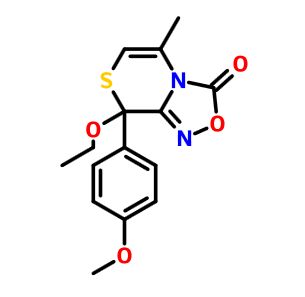
We present a series of oxadiazolothiazinones, selective inotropic agents on isolated cardiac tissues, devoid of chronotropy and vasorelaxant activity. Functional and binding data for the precursor of the series (compound 1) let us hypothesize LTCC blocking activity and the existence of a recognition site specific for this scaffold. We synthesized and tested 22 new derivatives: introducing a para-methoxyphenyl at C-8 led to compound 12 (EC50 = 0.022 μM), twice as potent as its para-bromo analogue (1). For 10 analogues, we extended the characterization of the biological properties by including the assessment of metabolic stability in human liver microsomes and cytochrome P450 inhibition potential. We observed that the methoxy group led to active compounds with low metabolic stability and high CYP inhibition, whereas the protective effect of bromine resulted in enhanced metabolic stability and reduced CYP inhibition. Thus, we identified two para-bromo benzothiazino-analogues as candidates for further studies.
8-ethoxy-8-(4-methoxyphenyl)-5-methyl-8H-[1,2,4]oxadiazolo[3,4-c][1,4]thiazin-3-one
Understanding Oxadiazolothiazinone Biological Properties: Negative Inotropic Activity versus Cytochrome P450-Mediated Metabolism
http://pubs.acs.org/doi/full/10.1021/acs.jmedchem.6b00030
/////////Cytochrome P450-Mediated Metabolism, Negative Inotropic Activity
CCOC2(c1ccc(OC)cc1)SC=C(C)n3c2noc3=O













